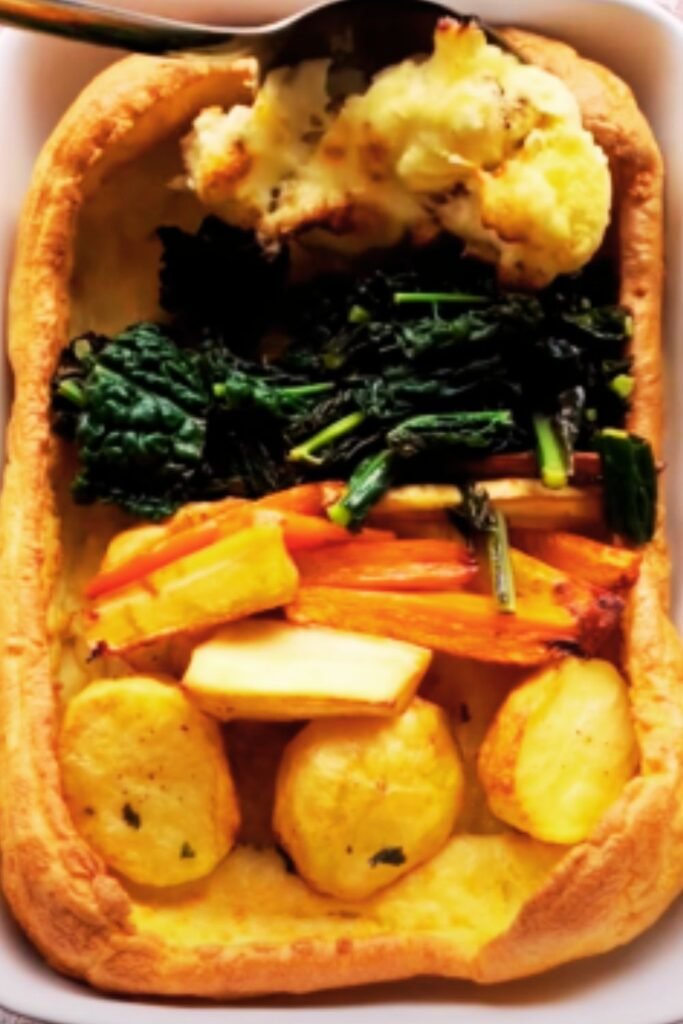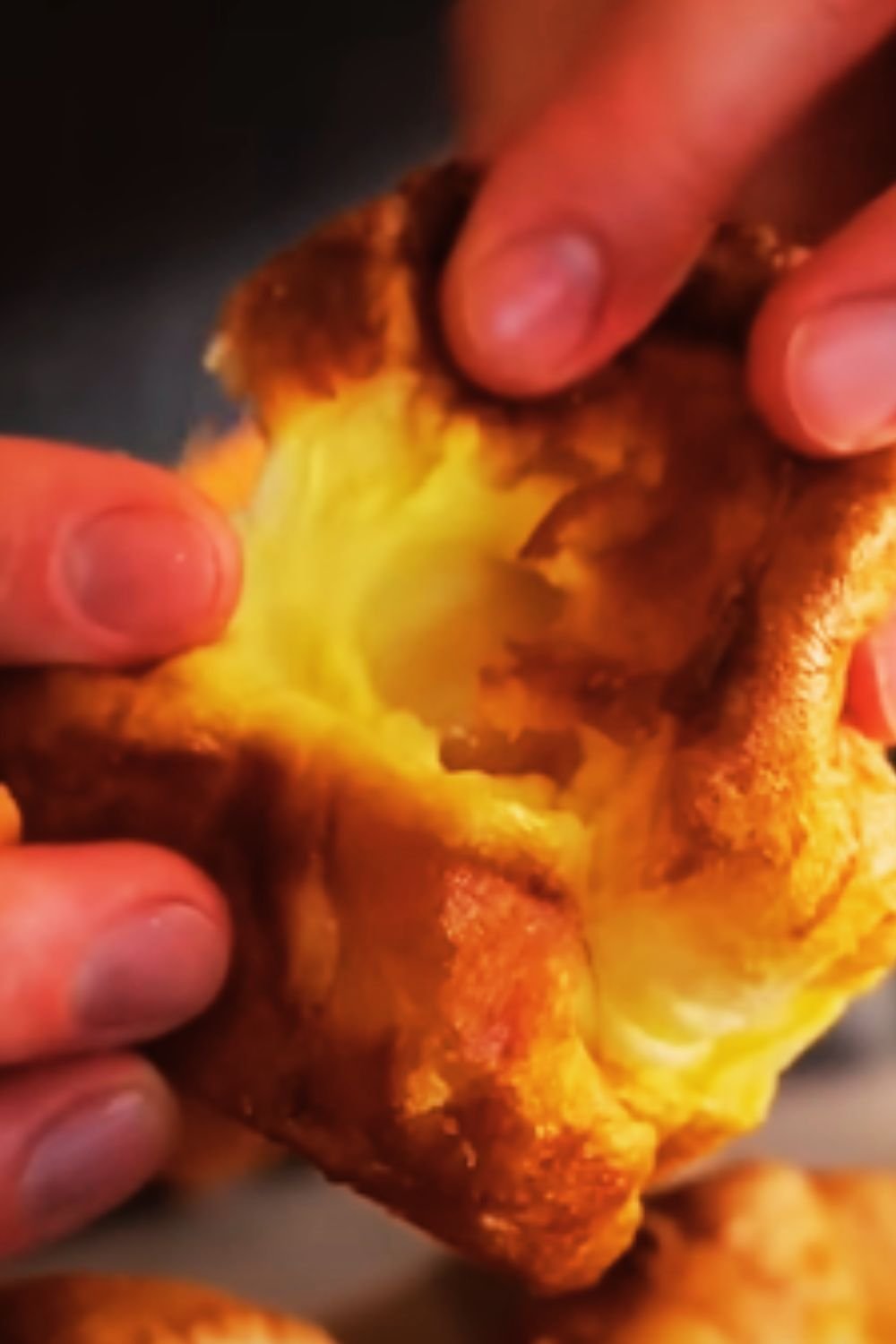There’s something magical about a perfectly risen Yorkshire pudding. Those crispy edges with a soft, slightly doughy middle that soaks up gravy like nothing else. I’ve spent years perfecting my Yorkshire pudding technique, and today I’m sharing all my secrets for creating that showstopping side dish that will have everyone asking for seconds.
Yorkshire puddings aren’t just a British tradition—they’re an art form. While they might seem intimidating at first, with just a few key techniques and the right recipe, you’ll be making picture-perfect puddings in no time. The best part? You only need four simple ingredients that you probably already have in your kitchen.
The History Behind Yorkshire Puddings
Yorkshire puddings originated in Northern England in the 18th century as a way to make use of the drippings from roasting meat. Traditionally, they were served as a first course with gravy to fill people up before the more expensive meat course. Clever, right?
Today, they’re most commonly served alongside a Sunday roast, particularly with roast beef, but they’re so delicious that I find any excuse to make them. The perfect Yorkshire pudding should be well-risen with a crisp exterior, a soft center, and a slight hollow in the middle—ideal for filling with gravy.
Essential Ingredients
For truly magnificent Yorkshire puddings, you need just four simple ingredients:
- Plain flour: The foundation of our batter
- Eggs: Provides structure and helps them rise
- Milk: Creates a smooth, pourable batter
- Salt: Enhances all the flavors
The magic isn’t just in the ingredients but in how you handle them. Let’s break down exactly what you’ll need:
| Ingredient | Amount | Notes |
|---|---|---|
| Plain flour | 140g (1 cup) | All-purpose flour works perfectly |
| Eggs | 4 large | Room temperature is crucial |
| Whole milk | 200ml (¾ cup + 1 tbsp) | Full-fat milk gives best results |
| Salt | 1 tsp | Regular table salt is fine |
| Vegetable oil or beef dripping | For tins | About 1-2 tbsp per cup in the tin |
The Perfect Yorkshire Pudding Recipe
Step 1: Prepare Your Batter
- Place 140g of plain flour in a large mixing bowl
- Make a well in the center and crack in 4 large eggs
- Add a pinch of salt
- Gradually whisk in 200ml of milk until completely smooth
- Pour the batter into a jug for easy pouring later
The key to a great Yorkshire pudding batter is allowing it to rest. I always let mine sit for at least 30 minutes, though ideally 1-2 hours or even overnight in the refrigerator. This resting period allows the gluten to relax, resulting in a lighter pudding with a better rise.

Step 2: Prepare Your Tins
The right equipment makes all the difference. A proper Yorkshire pudding tin with deep wells is ideal, but a muffin tin will work well too. Here’s how to prepare them:
- Preheat your oven to 220°C (425°F)
- Pour a small amount of vegetable oil or beef dripping into each well of your pudding tin (about 1-2 tablespoons)
- Place the tin in the hot oven for about 10-15 minutes until the oil is smoking hot
This preheating stage is absolutely critical. The secret to the magnificent rise of Yorkshire puddings is the immediate reaction between the cold batter and the screaming hot oil. Skip this step, and your puddings simply won’t reach their full potential.
Step 3: The Pour and Bake
Now for the moment of truth:
- Remove the hot tin from the oven carefully (it will be extremely hot!)
- Working quickly, pour the batter into each well, filling them about halfway
- Immediately return the tin to the oven
- Bake for 20-25 minutes until they’re golden brown and well risen
- DO NOT open the oven door during the first 20 minutes of cooking
The dramatic rise happens in those first crucial minutes. Opening the oven door creates a drop in temperature that can cause your puddings to collapse, resulting in sad, flat discs rather than proud, puffy crowns.
Step 4: Serving Your Yorkshire Puddings
Yorkshire puddings are best served immediately while they’re at their most crisp and impressive. They make the perfect accompaniment to a traditional Sunday roast with plenty of gravy, but they’re versatile enough to appear alongside many different meals.
If you need to make them ahead of time, they can be frozen after cooling completely. To reheat, place them directly from frozen into a hot oven (200°C/400°F) for about 5-7 minutes until crisp and heated through.
Common Yorkshire Pudding Problems Solved
Even experienced cooks sometimes encounter issues with Yorkshire puddings. Here are solutions to the most common problems:
Puddings Not Rising
This is perhaps the most common issue and usually happens for a few key reasons:
- The oil wasn’t hot enough: Make sure the oil is smoking hot before adding the batter
- Opening the oven door too soon: Resist the temptation to peek for at least 20 minutes
- Overmixing the batter: Mix just until combined to avoid developing too much gluten
- Old baking powder (if using): While traditional recipes don’t call for it, if you use baking powder, make sure it’s fresh
Puddings Collapsing After Baking
You’ve achieved that beautiful rise, only to have them deflate as soon as they come out of the oven. This happens because:
- Underbaking: They need that full cooking time to set properly
- Too much batter in each tin: Fill only halfway to allow room for expansion
- Uneven oven temperature: Consider rotating the tin halfway through baking
Puddings Sticking to the Tin
Nothing’s more frustrating than torn puddings:
- Not enough oil: Be generous with the oil in each well
- Oil not hot enough: Make sure it’s properly preheated
- Using a non-stick spray instead of oil: Real oil or fat works much better

Pro Tips for Perfect Yorkshire Puddings Every Time
After years of making Yorkshire puddings, I’ve picked up some handy tricks:
The Cold Ingredients Technique
For an extra rise, make sure your batter ingredients are cold when they go into the hot oil. While eggs at room temperature mix more easily into the batter, I’ve found that keeping the milk cold creates an even more dramatic temperature difference when it hits the hot oil, resulting in a better rise.
The Resting Method
I cannot emphasize enough how important it is to rest your batter. Here’s a detailed breakdown of how resting affects your puddings:
| Resting Time | Effect on Puddings |
|---|---|
| No rest | Dense, less rise, chewy texture |
| 30 minutes | Good rise, lighter texture |
| 1-2 hours | Excellent rise, crisp exterior, tender inside |
| Overnight | Maximum rise, perfect texture balance |
The Water Bath Technique
For incredibly light and airy puddings, try replacing about 25% of the milk with sparkling water. The carbonation provides extra lift during baking. Just add it right before pouring the batter into the tins.
The Pouring Technique
How you pour the batter can affect the final result. Pour in a steady stream from a height of about 20cm above the tin. This helps break any large air bubbles and ensures an even distribution of batter.
Variations to Try
While the classic Yorkshire pudding is perfect in its simplicity, there are some delicious variations worth exploring:
Herb-Infused Puddings
Add 1-2 tablespoons of finely chopped fresh herbs to your batter. Thyme, rosemary, or sage work beautifully and complement a roast perfectly.
Cheese Yorkshire Puddings
Sprinkle a small amount of grated Parmesan or strong Cheddar into each well just before returning the tin to the oven. The cheese creates a delicious savory crust.
Sweet Yorkshire Puddings
For a dessert version, add 1 tablespoon of sugar and a splash of vanilla extract to the batter. Serve with fresh berries and whipped cream or ice cream.
Yorkshire Pudding Canapés
Make mini Yorkshire puddings and fill them with savory fillings like cream cheese and smoked salmon or rare roast beef and horseradish for elegant appetizers.

Serving Suggestions
Yorkshire puddings are incredibly versatile and pair well with much more than just the traditional roast beef:
Classic Pairings:
- Roast beef with horseradish
- Roast chicken with bread sauce
- Roast lamb with mint sauce
- Roast pork with apple sauce
Creative Serving Ideas:
- Fill large Yorkshire puddings with sausages and mash for “Toad in the Hole”
- Use as a bowl for beef stew or chili
- Create a Yorkshire pudding “wrap” filled with roast meat and vegetables
- Serve mini puddings as appetizers with various fillings
Family-Style Presentation:
- Make one giant Yorkshire pudding (using a cast iron skillet) and place your roast and vegetables inside
- Serve individual puddings alongside a gravy boat for everyone to help themselves
Nutritional Information
For those keeping an eye on their intake, here’s the approximate nutritional information per Yorkshire pudding (based on a 12-pudding tray):
| Nutrient | Amount Per Pudding |
|---|---|
| Calories | 120 |
| Protein | 4g |
| Carbohydrates | 11g |
| Fat | 7g |
| Sodium | 140mg |
| Fiber | 0.5g |
Note that these values will vary depending on the exact size of your puddings and how much oil they absorb during cooking.
Make-Ahead and Storage Tips
Yorkshire puddings are best eaten fresh from the oven, but modern life doesn’t always allow for last-minute baking. Here’s how to work around that:
Make-Ahead Options:
- Prepare the batter in advance: Mix and store in the refrigerator for up to 24 hours
- Pre-bake and freeze: Fully cook the puddings, allow to cool, then freeze in an airtight container for up to 3 months
- Reheat from frozen: Place frozen puddings directly in a preheated oven (200°C/400°F) for 5-7 minutes
Storage Tips:
- Store cooled puddings in an airtight container in the refrigerator for up to 2 days
- To refresh leftover puddings, place in a hot oven for 3-5 minutes to crisp up again
- Avoid microwaving as this makes them soggy
Common Questions About Yorkshire Puddings
Q: Why didn’t my Yorkshire puddings rise?
A: The most common reason is that the oil wasn’t hot enough before adding the batter. Make sure it’s smoking hot! Also, check that your oven temperature is accurate, as many home ovens run cooler than their settings suggest.
Q: Can I make Yorkshire puddings without a special tin?
A: Absolutely! While a dedicated Yorkshire pudding tin is ideal, you can use a standard muffin tin, a popover pan, or even a cast iron pan for one giant pudding.
Q: Is it better to use oil or beef dripping?
A: Traditionalists swear by beef dripping for its rich flavor, but vegetable oil works perfectly well and is suitable for vegetarians. Avoid olive oil as its lower smoke point makes it less suitable for the high temperatures needed.
Q: How do I know when my Yorkshire puddings are done?
A: They should be well-risen with a deep golden brown color. The outside should be crisp, and they should feel dry to the touch, not soggy or doughy.
Q: Can I make the batter in a blender?
A: Yes! A blender creates a very smooth batter quickly, which can give excellent results. Just be careful not to overmix.
Q: Why do my Yorkshire puddings always stick to the tin?
A: Make sure you’re using enough oil (at least 1-2 tablespoons per well) and that it’s properly heated before adding the batter. Nonstick tins also help, but proper oil heating is the key factor.
Q: Can I make mini Yorkshire puddings for appetizers?
A: Definitely! Use a mini muffin tin and reduce the cooking time to about 15 minutes. They make perfect bite-sized vessels for all sorts of fillings.
Q: Are Yorkshire puddings suitable for vegetarians?
A: Yes, if you use vegetable oil instead of beef dripping. All the other ingredients are vegetarian-friendly.
Final Thoughts
Making perfect Yorkshire puddings is a skill that combines simple science with a touch of culinary magic. The dramatic transformation from liquid batter to puffed golden glory never fails to impress, and mastering this technique will elevate your roast dinners to restaurant quality.
Remember the key principles: a well-rested batter, screaming hot oil, and patience during baking. Follow these guidelines, and you’ll be rewarded with Yorkshire puddings that rise proudly and taste absolutely divine.
Whether you’re cooking a special Sunday lunch or just want to add something spectacular to an everyday meal, these Yorkshire puddings will become a cherished recipe in your culinary repertoire. So heat up that oven, get your batter ready, and prepare for some serious culinary satisfaction!


